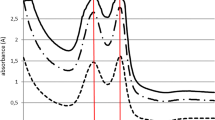Mycoplasma hominis is an opportunistic human pathogen that causes acute and chronic infections of the urogenital tract. A new form of M. hominis colonies (microcolonies) was isolated, that differed from typical colonies by morphology, size, growth rate, and resistance to unfavorable factors, in particular, to antibiotics. The formation of microcolonies is associated with a switch in energy metabolism towards nucleoside utilization, which leads to a decrease in energy production and a transition to a persistor-like state. Typical and microcolony cultures of M. hominis H-34 were obtained and a comparative analysis of their adhesive-invasive potential, morphology, and size was carried out. It was shown that both typical and microcolonies can effectively attach and penetrate into HeLa cells. Unlike microcolonies, the morphology and size of cells in typical colonies change significantly after HeLa infection. This indicates functional changes in cells of typical colonies during infection.
Similar content being viewed by others
References
Galyamina MA, Zubov AI, Ladygina VG, Li AV, Matyushkina DS, Pobeguts OV, Fisunov GYu. Comparative proteomic analysis of the Mycoplasma gallisepticum nucleoid fraction before and after infection. Bull. Exp. Biol. Med. 2022;172(3):336-340. doi: https://doi.org/10.1007/s10517-022-05388-4
Levina GA, Barkhatova OI, Gorina LG, Gamova NA, Goncharova SA, Miller GG, Raskova TM, Rastegaeva IN, Seliverstova NA, Rakovskaia IV. Unusual forms of persistence of Mycoplasma hominis in organism of infected humans. Zh. Mikrobiol. 2012;(4):104-109. Russian.
Rakovskaia IV, Gorina LG, Balabanov DN, Levina GA, Barkhatova OI, Goncharova SA, Gamova NA. Generalized mycoplasma infection in patients and carriers. Zh. Mikrobiol. 2013;(2):37-43. Russian.
Fisunov GY, Pobeguts OV, Ladygina VG, Zubov AI, Galyamina MA, Kovalchuk SI, Ziganshin RK, Evsyutina DV, Matyushkina DS, Butenko IO, Bukato ON, Veselovsky VA, Semashko TA, Klimina KM, Levina GA, Barhatova OI, Rakovskaya IV. Thymidine utilisation pathway is a novel phenotypic switch of Mycoplasma hominis. J. Med. Microbiol. 2022;71(1):001468. doi: https://doi.org/10.1099/jmm.0.001468
Henrich B, Kretzmer F, Deenen R, Köhrer K. Validation of a novel Mho microarray for a comprehensive characterisation of the Mycoplasma hominis action in HeLa cell infection. PLoS One. 2017;12(7):e0181383. doi: https://doi.org/10.1371/journal.pone.0181383
Hopfe M, Dahlmanns T, Henrich B. In Mycoplasma hominis the OppA-mediated cytoadhesion depends on its ATPase activity. BMC Microbiol. 2011;11:185. doi: https://doi.org/10.1186/1471-2180-11-185
Rakovskaya IV, Ermolaeva SA, Levina GA, Barkhatova OI, Mukhachev AY, Andreevskaya SG, Zhukhovitsky VG, Gorina LG, Miller GG, Sysolyatina EV. Microcolonies: a novel morphological form of pathogenic Mycoplasma spp. J. Med. Microbiol. 2019;68(12):1747-1758. doi: https://doi.org/10.1099/jmm.0.001081
Waites KB, Katz B, Schelonka RL. Mycoplasmas and ureaplasmas as neonatal pathogens. Clin. Microbiol. Rev. 2005;18(4):757-789. doi: https://doi.org/10.1128/CMR.18.4.757-789.2005
Whitson WJ, Ball PA, Lollis SS, Balkman JD, Bauer DF. Postoperative Mycoplasma hominis infections after neurosurgical intervention. J. Neurosurg. Pediatr. 2014;14(2): 212-218. doi: https://doi.org/10.3171/2014.4.PEDS13547
Author information
Authors and Affiliations
Corresponding author
Additional information
Translated from Byulleten’ Eksperimental’noi Biologii i Meditsiny, Vol. 173, No. 4, pp. 444-448, April, 2022
Rights and permissions
Springer Nature or its licensor holds exclusive rights to this article under a publishing agreement with the author(s) or other rightsholder(s); author self-archiving of the accepted manuscript version of this article is solely governed by the terms of such publishing agreement and applicable law.
About this article
Cite this article
Galyamina, M.A., Ladygina, V.G., Pobeguts, O.V. et al. Analysis of the Adhesive-Invasive Potential of Two Morphologically Different Types of Mycoplasma hominis Colonies. Bull Exp Biol Med 173, 437–440 (2022). https://doi.org/10.1007/s10517-022-05582-4
Received:
Published:
Issue Date:
DOI: https://doi.org/10.1007/s10517-022-05582-4




